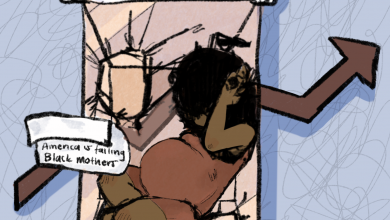The Debate of Teaching Critical Race Theory in K-12 Schools

Source: “Back to School 2012 – U.S. Army Garrison Humphreys, South Korea – 27 August 2012” by USAG-Humphreys is licensed under CC BY 2.0
Image Description: Children of different races sitting with papers on their desks in a school classroom. Some kids are writing on their papers with a pen or pencil, others looking at the camera.
The United States was built upon and continues to be developed as a result of settler colonialism, colonialism, and imperialism that depends on the marginalization of minority communities. However, this prejudiced history is often not taught in K-12 schools to protect and to uphold the false, exceptionalist narrative of the US as the land of opportunity, consisting of a mixing pot of different cultures.
A term coined by legal scholar Kimberlé Crenshaw, critical race theory, or CRT, is an academic framework that describes the social construction of race and how racism is not only present in the actions of individuals, but also embedded in the legal, social, and political institutions and systems in the US. Additionally, CRT showcases the intersectionality of the oppression faced by people of color and expresses how racism today cannot be fully understood without acknowledging the history of institutional and systemic racism in the US.
The current debate over the teaching of CRT in K-12 schools sparked when former President Donald Trump accused schools of teaching “left-wing indoctrination” to students and his subsequent push for a more “patriotic education” in a speech delivered in September 2020. As seen through his disdain for critical race theory and the 1619 Project, which discusses how the nation’s founders were both heroes and slave owners and how slavery continues to affect the daily lives of all Americans, President Trump’s focus on patriotic education clearly emphasizes nationalism and white supremacy.
Contemporary conservative curriculum, championed by President Trump and his supporters, primarily focuses on white, male perspectives that contribute to the indoctrination of students, as they grow up for years learning a selective and biased account of history as presented by schools. Disgusted by President Trump’s claims, many people have called for the expansion of American education to include more diverse perspectives and narratives that have been erased from mainstream media and history. These narratives would teach children the truth about the racist past and present of the US, disrupting the white, Eurocentric education currently being taught.
Thus, many advocated for the inclusion of critical race theory in the school curriculum to offer a more holistic K-12 education. According to a poll conducted by USA TODAY and Ipsos in September 2021, 69% of Democrats support schools teaching CRT, while only 27% of Republicans do. Furthermore, this poll found that only 37% of white parents favor their children’s schools teaching CRT, compared to 83% of Black parents, 71% of Asian parents, and 59% of Hispanic parents.
However, a majority of parents of all racial backgrounds (specifically 63%) wanted their children to learn about racism and slavery in school, indicating a disconnect between the traditional teaching of anti-Blackness and racism and the teaching of critical race theory. Due to the spread of misinformation by right-wing politicians and conservatives, many parents, especially white parents, do not fully understand the facets of CRT and view it as a threat to whiteness.
The negative rhetoric about critical race theory began with President Trump’s signing of Executive Order 13950 on September 22, 2020, which banned the use of CRT by federal departments and contractors in diversity training. Despite the overturning of this law by a federal judge and its subsequent repeal by President Joe Biden, many conservatives continued to push an anti-CRT agenda for education in K-12 schools.
Conservatives claim that critical race theory will lead to increased division and hatred amongst children and serve as an attack on white people by framing them as the oppressors in every scenario. For this reason, many states have passed bills banning the teaching of certain concepts of CRT within the past year.
The banning of “divisive concepts” and topics that promote “social justice” by the state governments of Arkansas, Georgia, Louisiana, New Hampshire, Ohio, Rhode Island, and West Virginia negatively impact students of all racial and ethnic backgrounds. Children of color do not learn the truth about the history of their oppression and continue to face systemic and institutional racism from a young age. On the other hand, white children continue to be indoctrinated into the false narrative of what the US is, as many claim they are “too young” to learn about racism, which makes them ineffective allies and active, at times unintentional, oppressors to people of color and other marginalized communities.
However, the concepts of critical race theory do not serve to divide the students or pit people against one another as many conservatives argue. CRT’s purpose is to teach the truth about the development of the US and how it still functions by oppressing people of color to uphold white dominance in society.
The role of CRT in depicting the US’s legacy of anti-Blackness and racism proves why it needs to be taught in schools. Many right-wing conservatives view any difference of opinion as an attack on whiteness itself and as a lack of patriotism, which is seen as a sinful practice. This anti-patriotism is deemed a threat to US nationalism although nationalism itself continues to promote racial and other forms of social injustices.
Overall, the controversy and misinformation of this debate have led to further polarization and divide in the United States, while simultaneously maintaining institutional and systemic racism that continues to harm communities of color every day.




